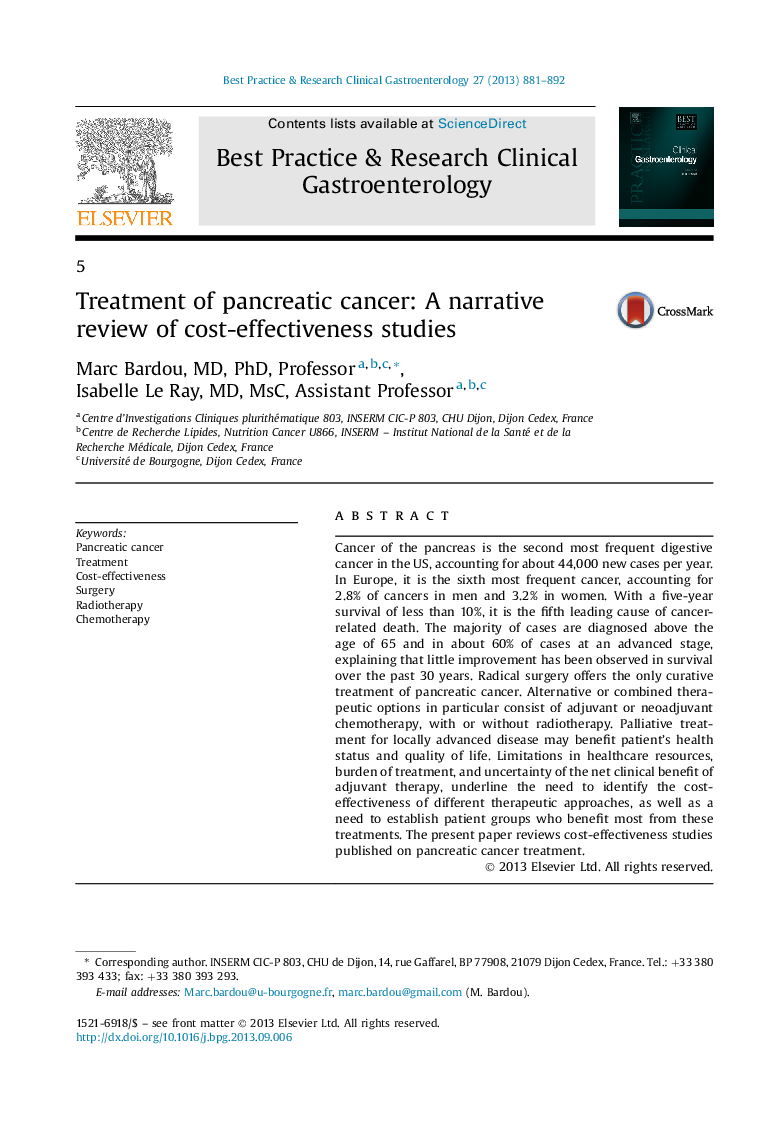| Article ID | Journal | Published Year | Pages | File Type |
|---|---|---|---|---|
| 6086428 | Best Practice & Research Clinical Gastroenterology | 2013 | 12 Pages |
Cancer of the pancreas is the second most frequent digestive cancer in the US, accounting for about 44,000 new cases per year. In Europe, it is the sixth most frequent cancer, accounting for 2.8% of cancers in men and 3.2% in women. With a five-year survival of less than 10%, it is the fifth leading cause of cancer-related death. The majority of cases are diagnosed above the age of 65 and in about 60% of cases at an advanced stage, explaining that little improvement has been observed in survival over the past 30 years. Radical surgery offers the only curative treatment of pancreatic cancer. Alternative or combined therapeutic options in particular consist of adjuvant or neoadjuvant chemotherapy, with or without radiotherapy. Palliative treatment for locally advanced disease may benefit patient's health status and quality of life. Limitations in healthcare resources, burden of treatment, and uncertainty of the net clinical benefit of adjuvant therapy, underline the need to identify the cost-effectiveness of different therapeutic approaches, as well as a need to establish patient groups who benefit most from these treatments. The present paper reviews cost-effectiveness studies published on pancreatic cancer treatment.
